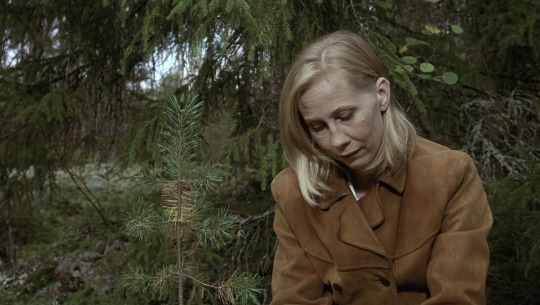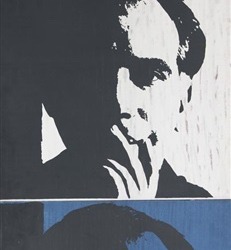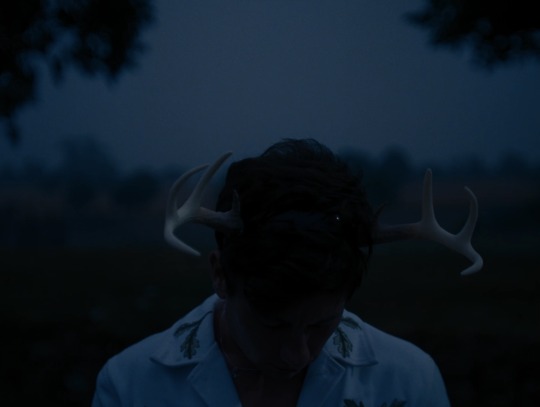Text

Harmony Hammond, Bandaged Grid #8, 2018, oil and mixed media on canvas, 64 x 73 in., 162.6 x 185.4 cm, Courtesy Alexander Gray Associates, New York, © ADAGP, Paris
2 notes
·
View notes
Text
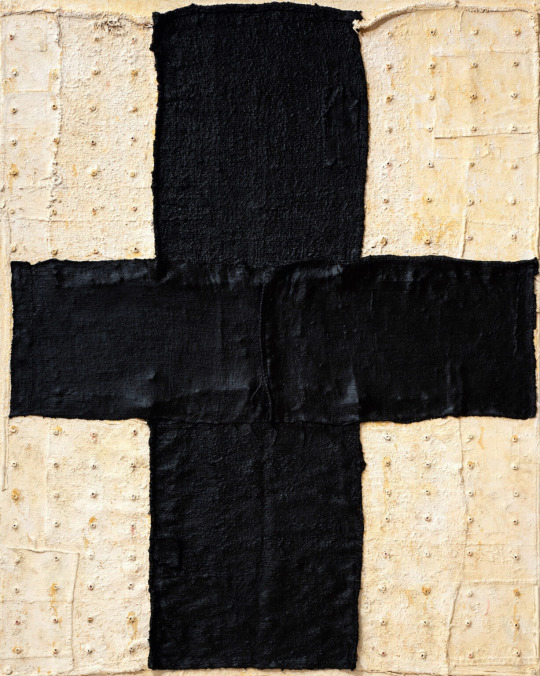
Harmony Hammond, Black Cross II, 2020–21. Oil and mixed media on canvas, 90 3/8 × 72 1/4 × 2 3/4 in. (229.6 × 183.5 × 7 cm)
5 notes
·
View notes
Text
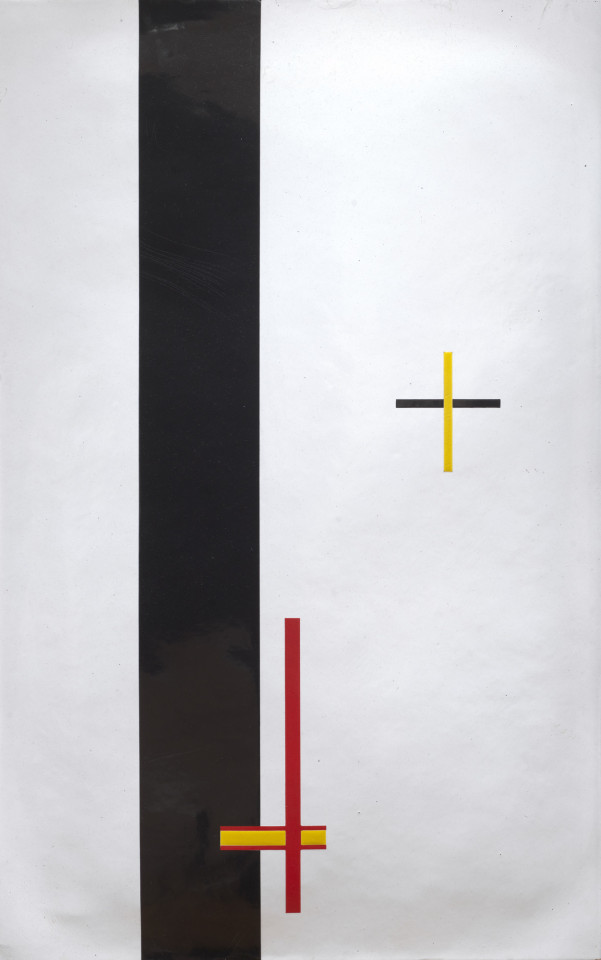
László Moholy-NagyEM 2 (Telephone Picture)1923
These works were produced by an enamel factory in Weimar, Germany, according to instructions given by the artist. Moholy-Nagy later wrote that he placed the order by telephone, thus providing the paintings with their unofficial title. While the three works share an identical abstract, geometric composition, EM 1, EM 2, and EM 3 were made at large, medium, and small scale, respectively. Each painting’s glossy enamel surface features a single strip of black that extends from top to bottom and two abstract shapes formed by lines of various thicknesses that intersect perpendicularly.
After encountering the work of the Russian avant-garde at an exhibition in Berlin in the early 1920s, Moholy-Nagy was persuaded by these artists’ belief that a revolutionary society demanded a radically new artistic language. He incorporated these ideas into his teaching at the Bauhaus, the influential German school of art, architecture, and design founded in Weimar in 1919 whose curriculum embraced modern technology as integral to art. By rejecting unique, handmade artwork in favor of serial mechanical production in his “telephone pictures,” Moholy-Nagy emphasized the role of the modern artist as a producer of concepts rather than a craftsman physically involved in the making of the work.
0 notes
Photo
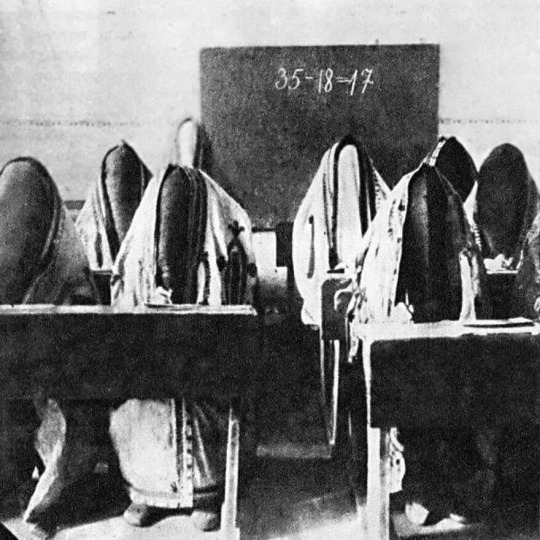
O'zbekiiston SSRda bindan yuz yildan kamroq ilgari 1920 va 1950 yillar orasida olingan suratlarda biz o'zbek ayollarining o'rta asrlardan qolgan e'skilik sarqitidan qutulishi va qadimiy udum va odatlar doim ham foydali, muxim, buyuk qadriyat e'masligini ko'rayapsiz.
Afsuski, hozir ayrim johil yurtdoshlarimiz ayol-qizlarni diniy liboslarda ta'lim va jamoat muassasalariga borishni qonuniylashtirish va shu bilan ayollarni yana o'rta asr jaholatiga qaytarish tarafdori.
На этих фото снятых в Узбекской СССР меньше ста лет назад от 1920ых до практически 1950ых вы можете увидеть избавление узбекской женщины от средневекового наследия, которого не всегда как мы видим великое, нужное и ценное.
К сожалению некоторые современники у нас требуя разрешать посещение образовательных и общественных учреждений для девочек и женщин в религиозной одежде и узаконить это не понимают что требуют возврата в средневековье.
#historyofuzbekistan #womenrights #paranja #hujum #welcometouzbekistan #uzbekguideschool #uzbekistantravel #gotouzbekistan #discoveruzbekistan #историяузбекистана #паранджа #освобождённыеженщинывостока #худжум #школагидовузбекистана #гидпоузбекистану #гидпоташкенту (at Узбекистан)
https://www.instagram.com/p/CLJqmSYBtQN/?igshid=1tj5ttv6fcznz
1 note
·
View note
Text
Mujeres queman sus velos durante el Hujum, campaña promovida por el Partido Comunista de la URSS en Centro Asia para quebrar con la mentalidad y tradiciones patriarcales musulmanas (1927):

Source
6 notes
·
View notes
Text
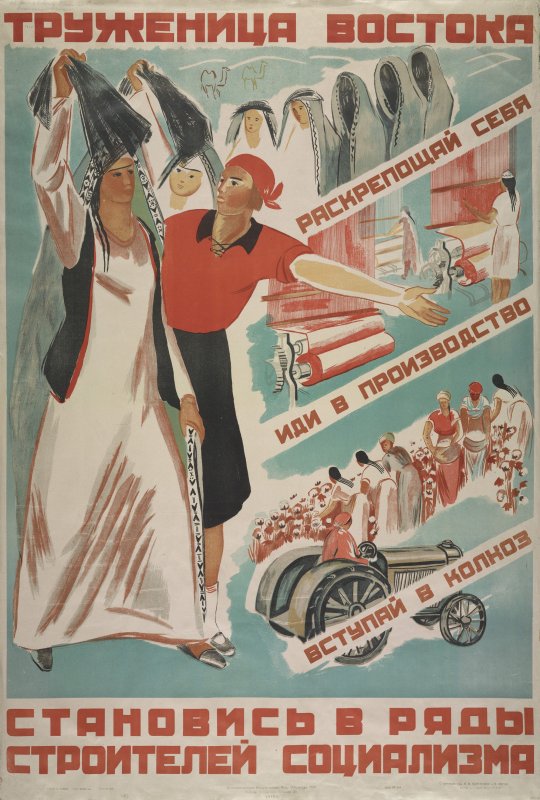
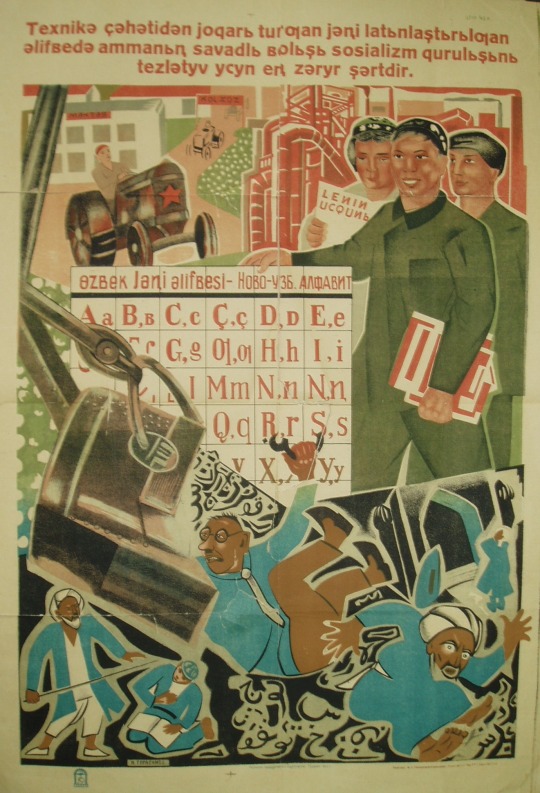
Posters in Soviet Central Asia.
Left: Promotes Muslim women unveiling and working.
Right: Replacing the Arabic script for the Cyrillic alphabet.
This propaganda was part of what was known as Hujum of Uzbekistan during Stalin's ruling. Many policies like banning the veil, polygamy, bride price etc. were put into place to secularize Central Asia.
After the fall of the Soviet Union, religiosity among Kazakhs and Uzbeks has slowly risen.
48 notes
·
View notes
Text
Georges Candilis
Georges Candilis was born in Baku, Azerbaijan, and grew up in Athens, Greece, where he studied architecture and met great French architect Le Corbusier in the early 30s. He became one of his closest workshop collaborator and worked on the construction of La Cité Radieuse, Le Corbusier’s masterpiece in Marseille, developing some architectural principles like planned urbanism and « habitat au plus grand nombre » as logic responses to the growth and the changes of individual housing. Founding member of the Team X (or Team Ten), he then specialized with his partners Alexis Josic and Shadrach Woods in large scale projects for affordable and inclusive housing in the 50s like the Mirail in Toulouse or The Free University in Berlin, as well as projects in Casablanca. His rational and democratic approach of architecture led him to design a modular plastic camping unit known as « Hexacube » and a whole holiday resort in Port-Leucate, Les Carrats, with Finnish interior designer Anja Blomstedt (who also worked with Charlotte Perriand at the time). They had an idea of cheap and very simple furniture that are easy to disassemble and transport, consisting of simple pieces of solid wood or plywood held in place with aluminium angle brackets. The pieces were made and assembled by the Sentou workshops, and only a few hundred pieces of this rare edition remain nowadays.
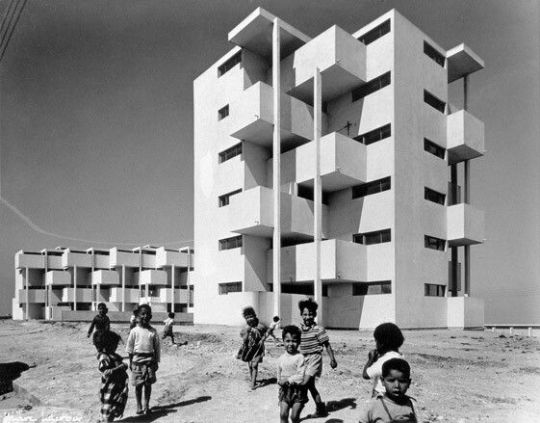
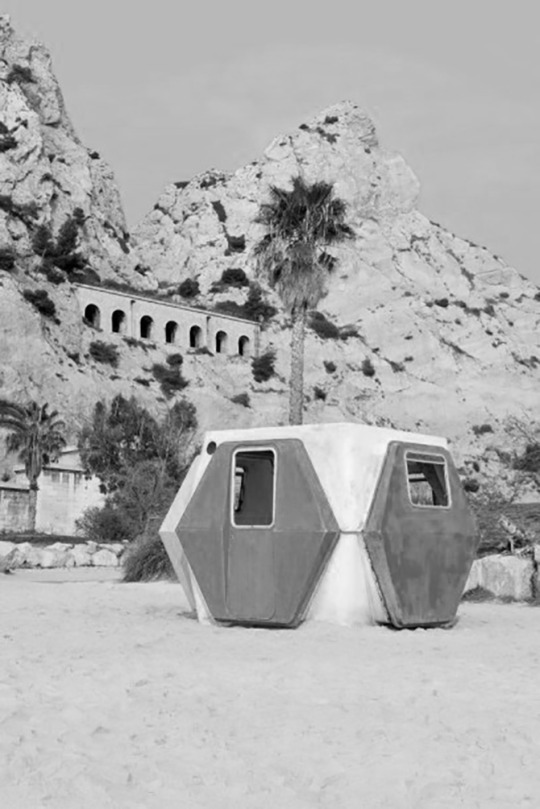





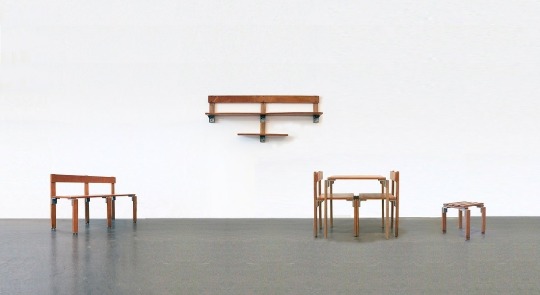



572 notes
·
View notes
Text
Recently Viewed: The Zone of Interest

The Zone of Interest is a horror film.
That isn’t a “genre” classification, by the way; the movie lacks the “traditional” tropes and conventions commonly associated with the most narrow, stringent application of that (often reductive) label, which tends to conjure images of ghosts, ghouls, and machete-wielding maniacs. Still, the intent of the story is to terrify the audience—it simply accomplishes this goal through subtler means than, say, Friday the 13th or The Evil Dead. There is, for example, little explicit bloodshed; the atrocities occur almost entirely offscreen. Yet “implication” doesn’t dull the impact of the violence; on the contrary, it somehow feels more confrontational (albeit less exploitative) than outright showing mass graves and gallons of gore.
The narrative revolves around a series of chilling juxtapositions. Seemingly ordinary family meals and joyful birthday celebrations, for instance, are lent a sinister tone by virtue of the fact that the patriarch wears the uniform of a high-ranking SS officer. The mother, meanwhile, tends her garden, taking great pride in the colorful, fragrant flowers and bountiful vegetables; she then casually mentions that she hopes her plants and crops will eventually obscure the drab, dreary concrete wall at the rear of the property—a barrier that borders Auschwitz. Indeed, the protagonists literally live in the shadow of the notorious death camp. They dress themselves in clothing and jewelry confiscated from the Jewish prisoners; the eldest son has even made a hobby of collecting discarded gold teeth and dental plates. At night, the father stands on the back porch, enjoying a cigar as he watches the black smoke billowing above the crematorium chimneys—the perverse epitome of a professional admiring a “job well done.” The household servants—local girls hired from the nearby village—dutifully clear the silverware, scrub the floors, and polish the master’s boots, constantly tormented by the knowledge that their very survival depends upon the “benevolence” of their employers.
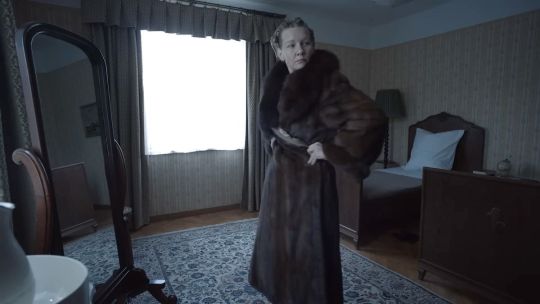
Director Jonathan Glazer observes the action with an unnervingly cold detachment. The predominantly static camera and rigidly symmetrical framing are reminiscent of the works of Roy Andersson and Chantal Akerman. This deliberately mundane, undramatic visual style emphasizes the inherent humanity of the subjects: they’re Nazis, yes, but they’re also people—a somewhat clichéd theme that nevertheless remains relevant and resonant. Anybody, after all, is capable of choosing evil; we must therefore be vigilant, lest we become history’s next monster.
Thus, The Zone of Interest is objective in its presentation, but not nonjudgmental. And that is a vital distinction.
145 notes
·
View notes
Photo

Delcy Morelos, Earthly paradise. (at La Biennale di Venezia)
https://www.instagram.com/p/ClGV4eFN7HUfSHkM1NhUh7gOYPObnfdw6z7La80/?igshid=NGJjMDIxMWI=
3 notes
·
View notes
Text





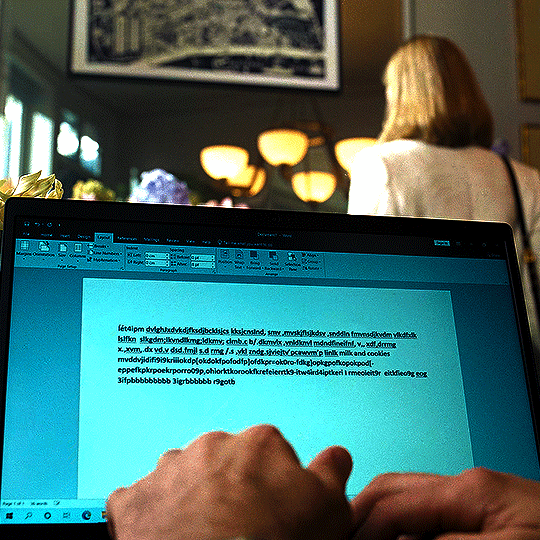
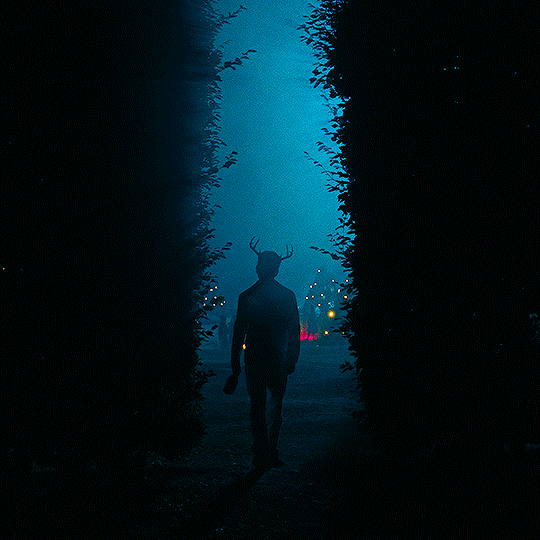

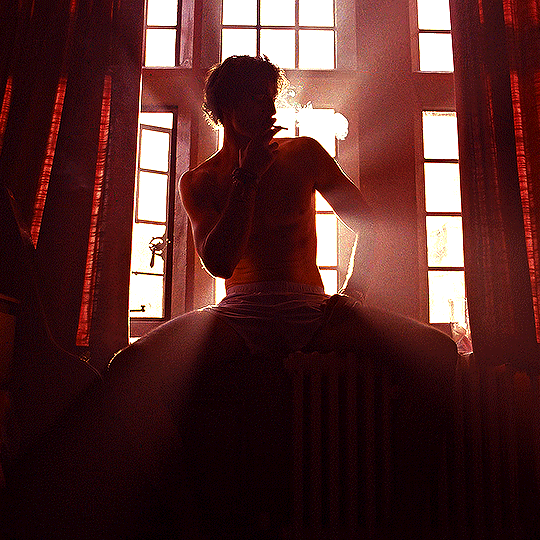
I wasn't in love with him. I know everyone thought I was. But I wasn't. I loved him. I loved him. I loved him. By God, I loved him. But sometimes... I hated him.
SALTBURN
—2023, dir. Emerald Fennell
3K notes
·
View notes
Text
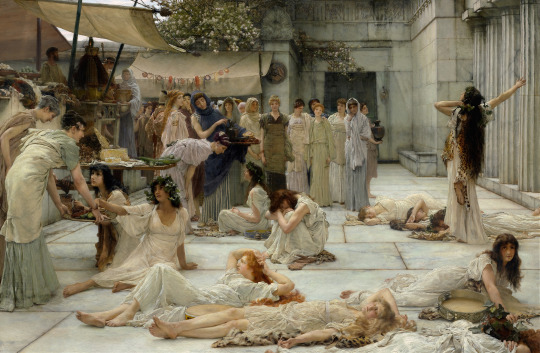
The Women of Amphissa by Lawrence Alma-Tadema (1887)
6K notes
·
View notes
Photo






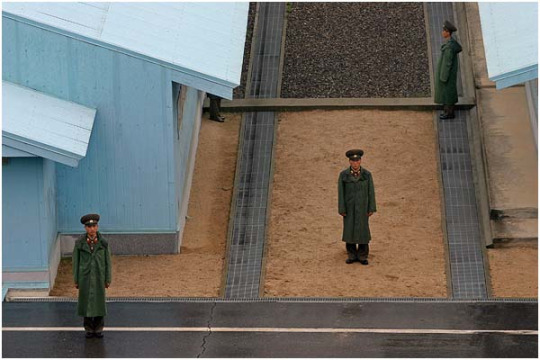
“What you want to be is a poet…To voice the real and at the same time create an image that is a world in itself, with its own coherence, its autonomy and sovereignty; an image that thinks.” –Luc Delahaye
On view at the Nailya Alexander Gallery is the first New York solo exhibition for the Russian photojournalist, Sergey Maximishin. The show accompanies a thoughtful new book Siberia: In the Eyes of Russian Photographers featuring work from over 50 photographers spanning the past 130 years.
Siberia is evocative of sub-zero temperatures, prisons, isolation, and intriguing for all we don’t know about this vast region. Maximishin’s work captivates the attention because it is remarkably insightful and well composed. We see a Siberia revealed in the quotidian details of people going about their business and contained in their worlds.
Whether this type of work transcends “Photojournalism” to become “Fine Art” (and selling in a gallery on 57th Street) is a disputation that will always be around. Maximishin is a talented, award winning, dyed-in-the-wool photojournalist. Whether his work needs the blessings of the market, curators, and influencers, seems beside the point. –Lane Nevares
192 notes
·
View notes
